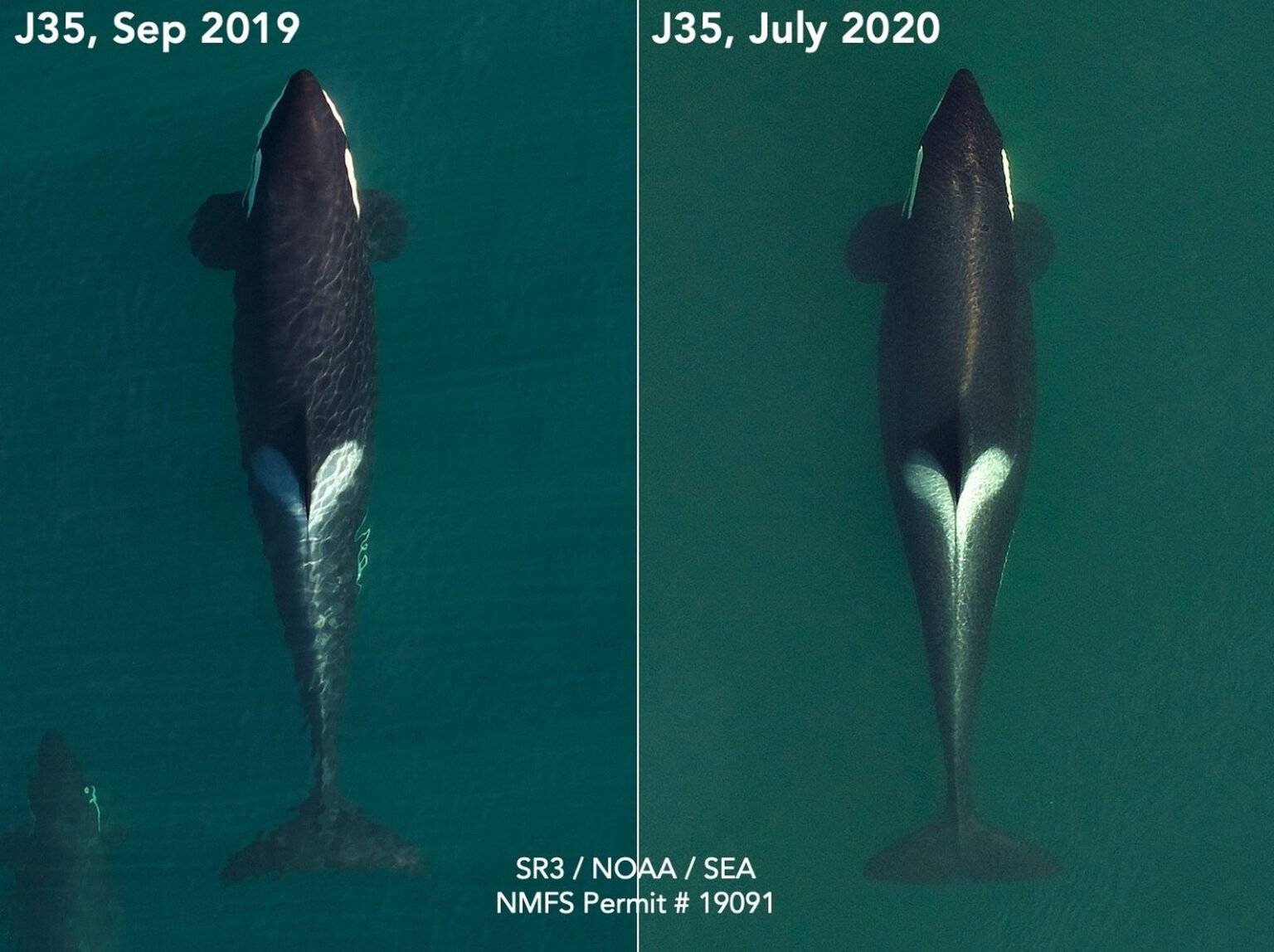It’s been nearly two years to the day since Tahlequah, J35, carried her deceased calf through the waters of the Salish Sea for 17 days, garnering global attention and it appears she’s pregnant again.
According to SR³ SeaLife Response, Rehabilitation and Research, a Seattle-based nonprofit dedicated to improving marine wildlife health and welfare, Tahlequah and a number of other female Southern resident orcas are expecting. Researchers Dr. Holly Fearnbach and Dr. John Durban from Southall Environmental Associate announced their discovery on July 26, with Seattle Times reporter Lynda Mapes revealing Tahlequah was included.
According to a post on the SR³ website, Fearnbach and Durban have been collecting aerial images of the majority of the endangered Southern Resident killer whale population since early July.
“This ongoing project is using photographs from drones to non-invasively measure growth and body condition to track the nutritional health of the population over time,” the post stated. “Quantitative measurements will be generated for all individuals encountered, but obvious shape changes in some individuals have revealed a number of pregnant whales from all three pods.”
In 2018, Tahlequah brought the global spotlight upon the plight of the Southern residents when for 17 days, and across 1,000 miles, she cared her calf that lived for just a half-hour throughout the Salish Sea. The world mourned with Talequah. Her new pregnancy has brought the spotlight upon her once again as national news agencies and beyond have announced she is expecting. The gestation period for an orca is typically 18 months.
While the orca pregnancies being discovered in the Southern residents are not unusual, they rarely lead to successful births. According to a 2017 study by the University of Washington’s Center for Conservation Biology, 69 percent of Southern resident pregnancies between 2008 and 2014 failed.
“Studies by our colleagues at the University of Washington have shown that these reproductive failures are linked to nutrition and access to their Chinook salmon prey, so we hope folks on the water can give the Southern Residents plenty of space to forage at this important time,” the SR³ said. “With such a small population (Center for Whale Research census current at 73 whales), every successful birth is hugely important for recovery.”



